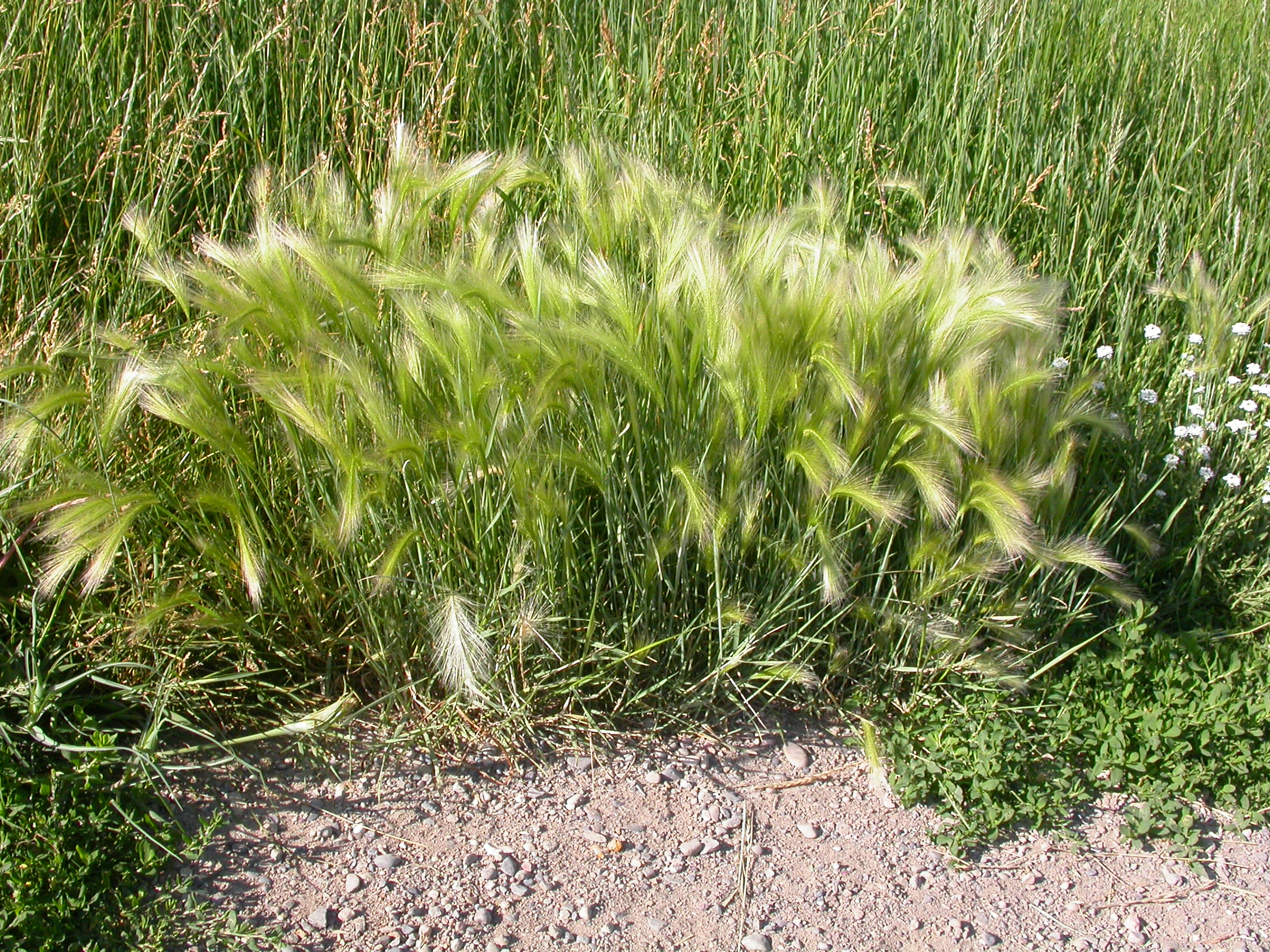Weed Of The Month: Foxtail Barley
Author: Allison Kosto, MSU Broadwater County Extension Agent
Allison Kosto
MSU Broadwater County Extension Agent
As a child, this was one of the first grasses that I learned how to identify. I even enjoyed playing with it when it was soft and green. However, foxtail barley is also a nuisance and threat to livestock, wildlife and cropland.
Description & Habitat
Native to North America, foxtail barley can be found without the United States. It can be found in pastures, roadsides, meadows and disturbed areas. It tends to prefer moist areas and is often found where water accumulates such as seasonal water areas and along streams.
Foxtail barley is a short-lived perennial (life cycle of more than two years). It’s a bunchgrass that reproduces by seeds and tillers. It grows 1 to 2 feet tall. It has a very distinctive seedhead that looks like a fox’s tail. It has long, needle-like awns up to 2 inches in length. The seedhead appears silky and light green while vegetative. It becomes tan and bristly once mature and breaks apart easily into individual seeds. Seedheads are produced in June to August. Seeds can spread by the wind or by sticking to animals, humans or vehicles. The plant is sometimes confused with bottlebrush squirreltail grass which has larger seedheads.
Livestock can safely graze foxtail barley prior to seed development. However, once the seeds form, they can become lodged in the skin, mouth, nose or eyes of animals causing infection and discomfort. Due to this, livestock are unlikely to graze it which causes it to increase while more desirable grasses are more heavily grazed and will decrease. When foxtail barley is in hay, livestock is unable to avoid eating the plant and problems can accelerate. As a result, hay contaminated with foxtail barley is considered unsafe and unsellable. The awns also can become entangled in sheep’s wool decreasing its value.
Management
The plant is primarily spread by human activity. It easily sticks to clothing, shoes, animals and vehicles. Do not drive or walk in heavily infested areas. Wash vehicles, ATVs and equipment before going home.
A primary control strategy for foxtail barley is to prevent it from going to seed. Research has shown that seeds survive less than 7 years in normal conditions. Mowing can be effective if done consistently. Tilling is not recommended since it disturbs the soil and can increase infestations. Targeted grazing can be effective in the early spring to prevent seed production. However, grazing can also damage desired forage, and should not be done after the plants are mature.
Herbicides are also an option. Roundup (glyphosate) can be applied in the early spring to suppress or control followed by reseeding. Other commonly used chemicals include Lambient, Plateau, Select and Oust. Pre-emergent herbicides include Rejuvra and Esplanade which are applied prior to seed germination when conditions are cool and wet. Always read and follow the label when applying herbicides. Common chemical names are used for clarity but do not imply endorsement of a product or brand.
Contact the MSU Extension Office in Broadwater County at 406-266-9242 or broadwater@montana.edu for questions on weed identification and management.
Article Images
Click on Image Thumbnail(s) to view fullsize image
PhotoCredit: Photo Provided by Allison Kosto, MSU Broadwater County Extension Agent
Image 1 Caption: Foxtail Barley
Photo Provided by Allison Kosto, MSU Broadwater County Extension Agent
